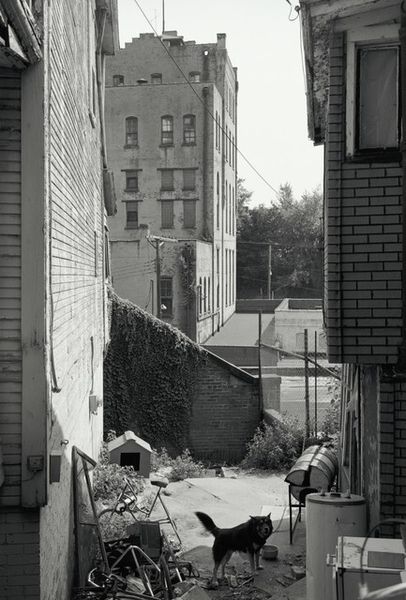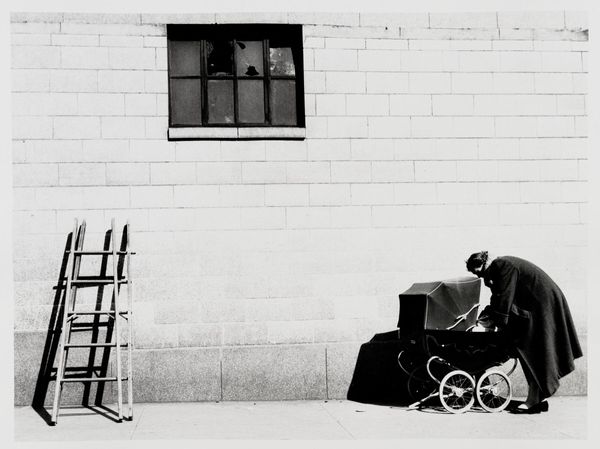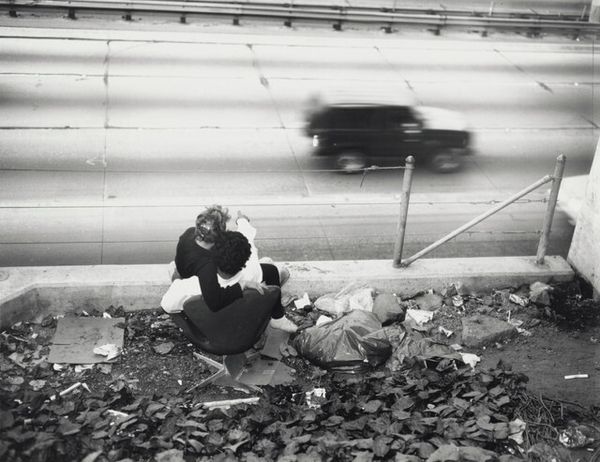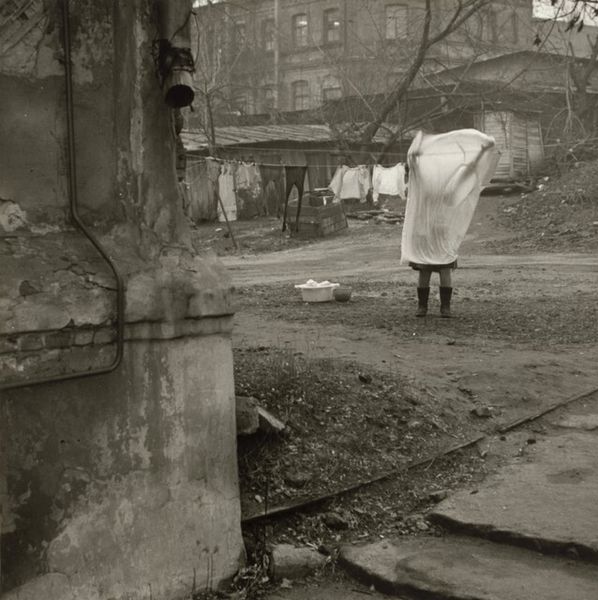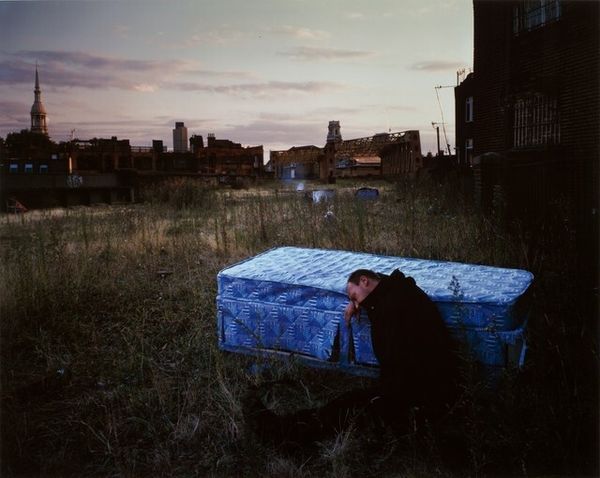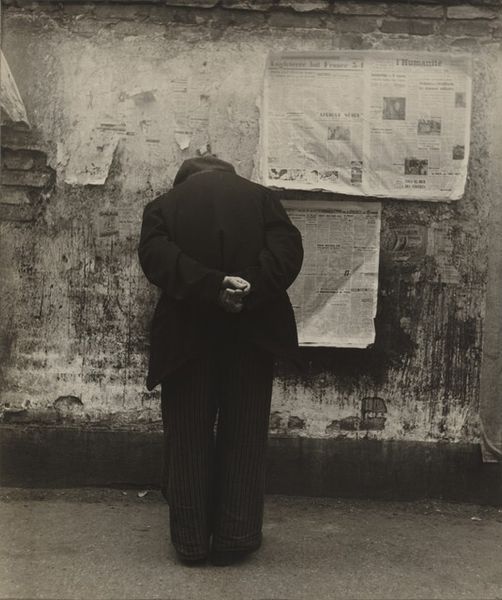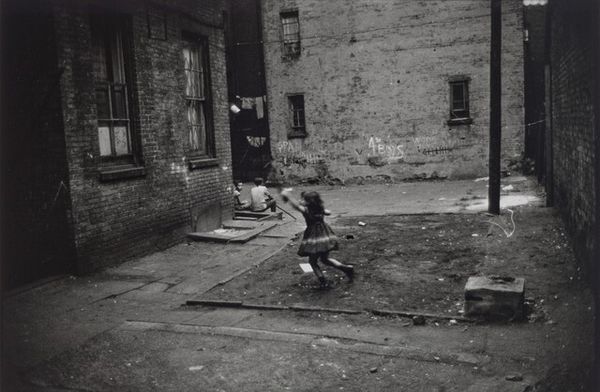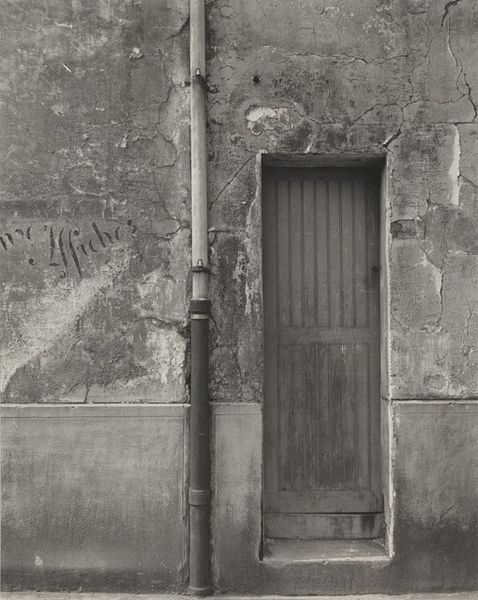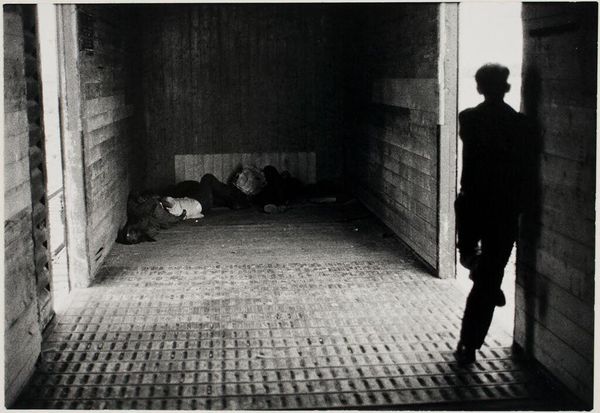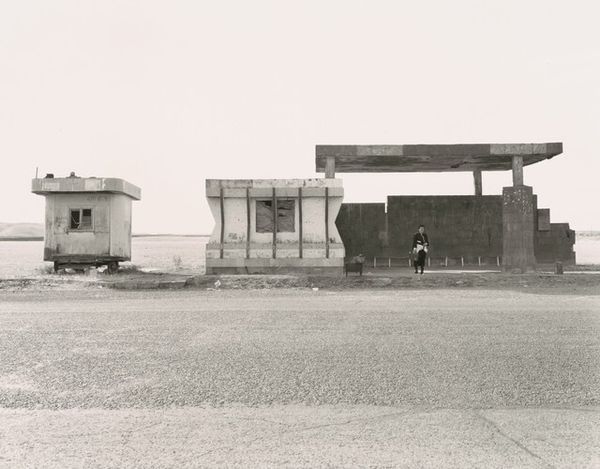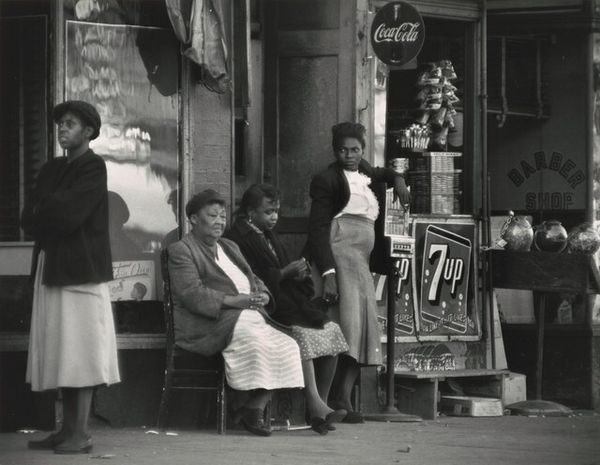
Heroin Smokers in the Gumruch Neighborhood, Teheran Possibly 1979 - 1980
0:00
0:00
photography
#
black and white photography
#
cool tone monochrome
#
street shot
#
outdoor photograph
#
outdoor photo
#
black and white format
#
street-photography
#
photography
#
black and white
#
monochrome photography
#
street photography
#
islamic-art
#
monochrome
#
realism
#
monochrome
Dimensions: image: 38.5 × 57 cm (15 3/16 × 22 7/16 in.) sheet: 50.8 × 60.5 cm (20 × 23 13/16 in.)
Copyright: National Gallery of Art: CC0 1.0
Editor: This black and white photograph, "Heroin Smokers in the Gumruch Neighborhood, Teheran" by Gilles Peress, was taken sometime between 1979 and 1980. There's a bleakness to it, figures huddled on the side of a street. What stands out to you about this piece? Curator: This image, taken during a turbulent period in Iranian history, operates as a powerful piece of social commentary. The composition directs our gaze down this stark street, implicitly critiquing the socio-political circumstances that lead to such visible desperation and drug use in a public space. How do you think the choice to shoot in black and white affects our interpretation? Editor: It definitely adds to the feeling of despair, I think. Color might make it feel… too real, maybe? Or sensationalize it in a way that black and white avoids. Curator: Exactly. Peress isn’t just documenting; he's prompting reflection on societal problems. The lack of color allows us to focus on form and texture—the rough brick, the slumped postures, the expressions of alienation. It brings up questions about the photographer’s intentions, his own social position, and how this kind of image could be received differently across different audiences, or then and now. What do you notice about where he positions himself relative to his subjects? Editor: It's interesting; he's not exactly hiding, but he's not intruding either, more like an observer. Curator: Precisely. It becomes crucial to consider the ethical dimensions of this approach. Who is this photograph *for*? What narratives does it support or challenge, both within Iran at the time, and internationally? The Gumruch neighborhood in Tehran may mean something different for someone from that city versus someone with no idea about Iran. Editor: I see what you mean. It really is more complex than just a snapshot of drug use. Curator: Photography, especially documentary photography, carries this weight of social responsibility, of shaping perception and, hopefully, driving dialogue about the worlds that we build. This photograph really captures that struggle. Editor: I will definitely keep these aspects in mind moving forward; it provides great new context to the image!
Comments
No comments
Be the first to comment and join the conversation on the ultimate creative platform.
